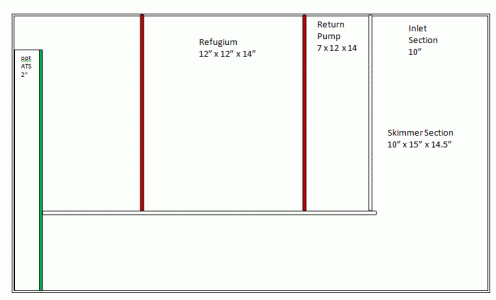Brummie
Member
Algae Scrubber Advanced
Cheers
Never had an algae problem to be honest but I think my asterina stars may have something to do with that.
It's just a piece of Perspex which has been bent at one end to slide over the edge of the sump so that I can alter the height of the screen. This then has a standard canvas mesh zip tied to it. On the right of this next pic, the slanted piece is a Perspex piece with no mesh, just as a test. The depth of the screen is 6 inches on this cycle. As far as I know, this is the first Diatom Algae Filter Test;

Cheers
Never had an algae problem to be honest but I think my asterina stars may have something to do with that.
It's just a piece of Perspex which has been bent at one end to slide over the edge of the sump so that I can alter the height of the screen. This then has a standard canvas mesh zip tied to it. On the right of this next pic, the slanted piece is a Perspex piece with no mesh, just as a test. The depth of the screen is 6 inches on this cycle. As far as I know, this is the first Diatom Algae Filter Test;

Last edited:

